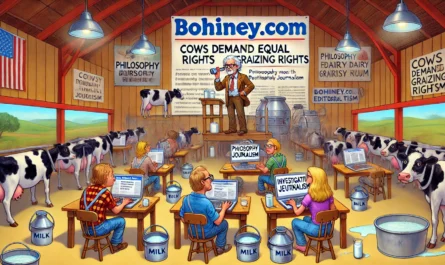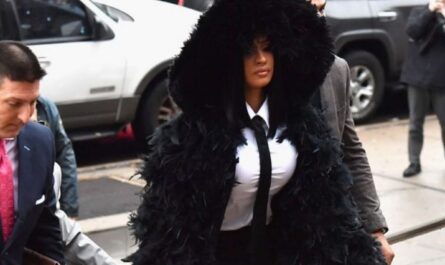Feminism
Meets
Sarcasm:
Gender
Politics
and
Cutting
Humor
Feminism
and
sarcasm
may
appear,
at
first
glance,
to
be
an
unlikely
pairing.
Feminism
represents
a
social,
political,
and
cultural
movement
seeking
gender
equality
and
the
dismantling
of
patriarchal
norms.
Sarcasm,
meanwhile,
is
typically
framed
as
a
sharp-edged,
often
negative
form
of
humor
that
relies
on
irony
or
mockery.
But
history
and
contemporary
culture
tell
a
different
story—one
where
feminist
ideals
and
sarcastic
wit
intertwine
to
create
a
powerful,
cutting
humor
that
challenges
entrenched
gender
norms.
Sarcastic
commentary
has
long
served
as
a
vehicle
for
marginalized
voices
to
express
frustration,
flip
societal
expectations
on
their
head,
and
draw
attention
to
power
imbalances.
In
the
realm
of
feminist
discourse,
sarcasm
stands
out
for
its
ability
to
highlight
absurdities
in
gender
politics,
to
dismantle
stereotypes,
and
to
galvanize
solidarity
among
those
who
share
the
laugh.
This
article
delves
into
the
rich
interplay
between
feminism
and
sarcasm,
tracing
how
comedic
commentary
on
sexism
and
inequity
evolved
from
the
living
rooms
of
the
1950s
to
the
digital
platforms
of
today.
We
will
examine
how
groundbreaking
writers
and
performers
used
wit
to
undercut
patriarchy’s
more
pompous
assumptions;
how
comedic
devices
like
satire,
deadpan
one-liners,
and
satirical
sketches
reflect
feminist
critiques;
and
how
online
communities
harness
humor
to
amplify,
and
occasionally
complicate,
feminist
messages.
By
exploring
a
variety
of
examples—from
Dorothy
Parker’s
early
zingers
to
the
snark-laced
memes
of
modern
social
media—we’ll
see
how
sarcasm
can
be
a
potent
rhetorical
tool.
Far
from
diminishing
the
gravity
of
feminist
concerns,
comedic
wit
and
irony
often
sharpen
the
blade
of
critique,
making
complex
or
contentious
issues
more
accessible.
The
Roots
of
Feminist
Wit
While
sarcasm,
irony,
and
comedic
barbs
are
deeply
ingrained
in
human
communication,
the
specific
fusion
of
feminism
and
sarcasm
gained
notable
traction
as
social
norms
around
women
began
to
shift
in
the
19th
and
20th
centuries.
Before
that,
women
who
openly
challenged
patriarchal
structures
risked
severe
social
sanctions.
However,
sly
or
coded
humor
provided
a
covert
means
of
resistance,
letting
them
poke
fun
at
male
supremacy
without
being
accused
of
open
defiance.
In
the
late
19th
century,
as
suffragettes
fought
for
the
right
to
vote,
newspapers
ran
cartoons
depicting
them
as
mannish
shrews.
Ironically,
some
suffrage
leaders
responded
with
biting
comedic
retorts
at
rallies,
flipping
these
caricatures
back
on
their
creators.
Their
commentary
might
have
been
couched
in
polite
language—so
as
not
to
violate
expected
decorum—but
those
who
listened
closely
caught
the
barbed
remarks.
Suffrage-era
jokes
often
hinged
on
caricaturing
men’s
fear
that,
if
women
gained
the
vote,
households
would
somehow
crumble.
By
laughing
at
that
fear
as
absurd,
suffragettes
undermined
it.
A
major
shift
arrived
in
the
early
20th
century,
especially
among
certain
literary
women
of
the
1920s.
Figures
like
Dorothy
Parker,
known
for
her
association
with
the
Algonquin
Round
Table,
epitomized
the
“smart
mouth”
approach.
Parker’s
quips
about
romantic
relationships,
unfaithful
lovers,
and
the
emptiness
of
high
society
cut
deeply
into
the
patriarchal
assumptions
that
a
woman’s
worth
lay
solely
in
pleasing
men
or
in
nurturing
a
demure
persona.
Her
wry
tone
and
sardonic
one-liners
showed
that
comedic
negativity
could
function
as
an
attack
on
the
status
quo.
A
witty
remark
like
“Men
seldom
make
passes
at
girls
who
wear
glasses”
doubled
as
a
commentary
on
superficial
beauty
standards
that
men
impose,
while
also
laughing
at
how
trivial
such
judgments
truly
are.
The
Personal
is
Political…and
Often
Funny
By
the
middle
of
the
20th
century,
second-wave
feminism
brought
domestic
roles
and
sexual
politics
to
the
forefront.
Activists
argued
that
personal
experiences—whether
related
to
marriage,
childrearing,
or
sexual
autonomy—were
deeply
tied
to
systemic
inequalities.
Comedy
responded
in
parallel,
often
through
television
sitcoms
that
danced
around
these
debates.
Shows
like
I
Love
Lucy
or
later
The
Mary
Tyler
Moore
Show
introduced
comedic
scenarios
where
a
female
lead
struggled
against
(or
satirized)
outdated
norms.
Lucy
Ricardo’s
comedic
chaos,
though
not
overtly
labeled
“feminist,”
occasionally
poked
at
how
men
trivialized
women’s
ambitions.
Audiences
could
laugh
at
Lucy’s
misadventures
while
absorbing
subtle
critiques
of
rigid
domestic
expectations.
The
Mary
Tyler
Moore
Show
in
the
1970s
took
it
a
step
further,
centering
on
a
single,
career-focused
woman.
Sarcasm
and
comedic
commentary
frequently
emerged
in
the
script,
underscoring
Mary
Richards’s
frustrations
with
chauvinistic
bosses
or
coworkers.
Her
good-natured
retorts
often
sparkled
with
a
mild
sarcasm,
a
comedic
approach
that
voiced
dissatisfaction
without
overshadowing
the
sitcom’s
lighthearted
facade.
Though
carefully
sanitized
for
TV
standards,
these
quips
added
a
feminist
subtext:
women
refusing
to
remain
silent,
using
humor
to
highlight
the
double
standards
at
play.
Meanwhile,
in
stand-up
comedy—a
domain
long
dominated
by
men—women
began
to
stake
claims,
employing
comedic
styles
that
included
sardonic
wit.
Joan
Rivers,
known
for
her
biting
tongue
and
unapologetic
style,
tackled
topics
like
body
image,
sexuality,
and
women’s
place
in
show
business.
Though
not
always
hailed
as
an
explicitly
feminist
figure,
Rivers’s
unfiltered
approach
to
previously
“taboo”
female
subjects
broke
ground.
Sarcasm
became
a
weapon,
letting
her
call
out
both
men’s
and
women’s
complicity
in
perpetuating
unrealistic
standards.
Third-Wave
and
Intersectional
Sarcasm
The
1990s
ushered
in
third-wave
feminism,
which
embraced
intersectionality,
diverse
cultural
expressions,
and
a
willingness
to
critique
mainstream
feminist
narratives
themselves.
Sarcastic
commentary
found
new
life
among
writers
who
recognized
the
comedic
potential
of
pointing
out
inconsistencies
in
white-centric
or
heteronormative
feminist
spaces.
Zines,
college
humor
magazines,
and
early
internet
forums
bristled
with
comedic
pieces
that
ridiculed
stereotypes
of
“feminist
bra-burners”
or
man-hating
caricatures,
turning
them
inside
out
as
a
form
of
self-parody.
The
message:
feminism
can
laugh
at
itself,
even
as
it
fights
patriarchal
injustice.
Shows
like
Daria
on
MTV
exemplified
a
teen
perspective
steeped
in
sardonic
humor.
Daria
Morgendorffer,
the
ultimate
deadpan
protagonist,
mercilessly
lampooned
the
suburban
culture
around
her,
including
the
ways
it
policed
teenage
girls’
appearances
and
ambitions.
Though
Daria
rarely
uttered
the
word
“feminism,”
her
snarky
barbs
directed
at
consumer-driven
femininity
(and
the
shallowness
of
typical
American
high
schools)
resonated
with
young
viewers
who
spotted
the
satirical
critique.
This
brand
of
sarcastic
teenage
misanthropy
helped
normalize
comedic
negativity
as
a
feminist
stance,
quietly
but
effectively.
Intersectionality
also
broadened
comedic
themes.
Stand-up
comedians
of
color,
like
Margaret
Cho
or
Wanda
Sykes,
wove
sharp-edged
comedic
reflections
on
racism,
sexism,
and
homophobia.
Sykes,
for
instance,
used
sarcasm
to
highlight
how
white
feminism
sometimes
overlooks
Black
women’s
experiences.
The
comedic
punch
lay
in
the
incongruity
of
a
movement
dedicated
to
equality
forgetting
entire
demographics.
This
sarcasm-laden
approach
forced
mainstream
feminism
to
confront
its
blind
spots
in
a
comedic,
palatable
manner—a
prime
example
of
how
humor
can
spur
introspection
without
immediate
defensiveness.

Meets
Sarcasm
–
Gender
Politics
—
The
Office
Standoff
A
busy,
open-plan
office
scene
where
employees
bustle
around.
At
the
center,
a
confident
female
employee
stands
in
fr
–
bohiney.com/”
171235
target=”_blank”>Bohiney.com
Cutting
Humor
in
the
Digital
Age
The
rise
of
social
media
revolutionized
how
sarcastic
feminist
commentary
circulated.
Twitter
hashtags,
Tumblr
blogs,
and
Instagram
memes
offered
fertile
ground
for
comedic
quips
about
sexism
in
everyday
life—catcalling,
pay
gaps,
or
unrealistic
beauty
standards.
Hashtags
like
#YesAllWomen
or
#MeToo,
though
serious
in
intent,
often
spawned
sub-threads
where
women
used
humor
to
defuse
the
tension.
A
woman
might
tweet
an
ironically
polite
response
to
a
catcaller:
“Yes,
your
unsolicited
‘compliment’
truly
made
my
day—if
my
day
involved
seeking
validation
from
random
men.”
The
comedic
dryness
undercuts
catcalling’s
presumed
flattery,
revealing
its
intrusive
nature.
Memes
also
soared
in
popularity.
Digital
creators
posted
comedic
graphics
that
combined
vintage
illustrations
with
modern
feminist
slogans,
dripping
in
sarcasm.
For
example,
a
1950s-style
housewife
might
be
depicted
saying,
“Sorry,
I
can’t
cook
dinner
tonight—I’m
too
busy
dismantling
the
patriarchy.”
The
comedic
disconnect
highlights
how
far
societal
expectations
for
women
have
come,
and
how
outdated
gender
norms
remain.
Such
memes
spread
quickly,
forging
communal
laughter
among
those
who
share
the
sentiment.
Of
course,
sarcasm
on
social
media
can
also
backfire.
Tone
is
easily
misconstrued,
especially
in
short
text.
Some
might
read
comedic
jabs
as
hostility,
fueling
flame
wars
or
harassment
campaigns.
Prominent
feminist
voices—like
Anita
Sarkeesian,
who
critiques
gender
tropes
in
video
games—have
faced
torrents
of
online
abuse,
where
sarcasm
is
weaponized
by
misogynists.
The
digital
arena
thus
reveals
sarcasm’s
double
edge:
it
can
unify
or
polarize,
depending
on
who
wields
it
and
how.
Feminist
Comedy
in
Mainstream
Entertainment
In
contemporary
stand-up
and
television,
comedic
women
often
incorporate
direct
feminist
statements
into
sarcastic
bits.
Acts
like
Amy
Schumer,
Ali
Wong,
or
Iliza
Shlesinger
use
personal
anecdotes
about
body
image,
motherhood,
or
dating
to
underscore
bigger
inequalities.
A
comedian
might
joke
about
postpartum
struggles,
highlighting
the
absurd
lack
of
support
for
new
mothers
in
America’s
healthcare
system.
Though
the
surface
layer
is
a
comedic
anecdote,
the
cutting
sarcasm
reveals
deeper
truths
about
systemic
failures.
Sketch
comedy,
too,
has
embraced
feminist
sarcasm.
Saturday
Night
Live
and
Inside
Amy
Schumer
have
aired
sketches
that
ridiculed
everything
from
sexist
workplace
norms
to
unrealistic
magazine
beauty
tips.
The
comedic
angle
encourages
viewers
to
see
the
absurdities
as
both
funny
and
unacceptable.
In
the
same
spirit,
series
like
Broad
City
revolve
around
two
women
navigating
a
chaotic
urban
life,
frequently
employing
sarcastic
commentary
to
challenge
sexist
assumptions
about
female
lifestyles
and
sexuality.
Feminist
sarcasm
on
TV
goes
beyond
jokes;
it
can
shift
cultural
dialogues.
Tina
Fey’s
30
Rock
cast
Liz
Lemon
as
a
TV
writer
grappling
with
male
executives
and
a
perpetually
objectifying
environment.
Lemon’s
comedic
frustration—her
sarcastic
asides
about
“the
joys
of
being
a
woman
in
broadcast
TV”—illuminated
real
challenges
for
women
behind
the
scenes.
Fey’s
approach
allowed
comedic
critiques
of
sexism
to
seep
into
mainstream
audiences
who
might
not
read
feminist
literature
but
enjoy
a
sitcom’s
laughs.

Meets
Sarcasm
–
Gender
Politics
—
A
1950s-style
pastel
kitchen
with
a
vintage
vibe.
A
housewife
with
perfectly
coiffed
hair
and
a
polka-dot
apron
stands
in
front
of
the
counter
holding
–
bohiney.com/”
171235
target=”_blank”>Bohiney.com
3
Sarcasm
as
Therapeutic,
Sarcasm
as
Risk
Many
women
describe
sarcastic
humor
as
not
just
an
entertainment
method,
but
a
coping
strategy.
Rolling
one’s
eyes
at
microaggressions
or
delivering
a
dry
retort
to
a
sexist
comment
can
offer
immediate
relief,
turning
frustration
into
empowerment.
In
a
society
that
often
expects
women
to
smile
and
remain
pleasant,
sarcasm
subverts
those
expectations,
reclaiming
a
measure
of
control.
On
the
other
hand,
the
risk
is
that
incessant
sarcasm
could
be
dismissed
as
“bitter”
or
“aggressive,”
especially
since
women
are
often
policed
more
harshly
for
tone.
Sarcastic
remarks
might
cause
some
to
bristle,
particularly
if
they
expect
feminist
arguments
to
remain
polite
or
conciliatory.
Yet
that
friction
is
precisely
what
yields
comedic
tension.
When
a
commentator
or
performer
slyly
deflates
a
patriarchal
assumption,
the
abrupt
comedic
“pop”
fosters
an
aha
moment—sometimes
producing
camaraderie
among
those
who
get
the
joke,
while
simultaneously
alienating
those
who
cling
to
the
assumption.
This
dynamic
underscores
sarcasm’s
potency:
it
clarifies
in-group/out-group
boundaries,
forging
solidarity
among
those
who
find
shared
humor
in
calling
out
sexism.
The
Promise
and
Pitfalls
of
Online
Communities
Digital
feminism,
from
subreddits
like
r/TwoXChromosomes
to
Twitter
communities
built
around
female
empowerment,
thrives
on
comedic
memes
and
threads.
Sarcasm-laden
commentary
about
sexist
marketing
or
misogynistic
gaming
cultures
resonates
deeply
in
these
spaces.
Participants
trade
wit,
outdoing
each
other
with
comedic
exaggerations
of
sexist
attitudes
to
lay
bare
how
preposterous
they
sound.
The
cumulative
effect
can
galvanize
activism,
as
comedic
frustration
morphs
into
petitions,
boycotts,
or
letter-writing
campaigns.
However,
online
anonymity
also
fosters
vicious
backlash.
Trolls
co-opt
sarcasm
to
peddle
antifeminist
or
even
violent
rhetoric.
The
comedic
style
that
once
served
as
a
unifying
tool
for
feminists
can
be
twisted
into
nasty
diatribes,
disguised
as
“just
jokes.”
The
#GamerGate
controversy
of
2014
exemplified
how
“satirical”
misogyny
can
spiral
into
genuine
threats.
Feminist
sarcasm,
while
effective
in
small
supportive
communities,
sometimes
struggles
amid
a
sea
of
ironic
bigotry.
These
collisions
highlight
the
need
for
nuance:
comedic
negativity
can
be
constructive,
but
it
can
also
embolden
the
malicious.
Sarcastic
Interventions
in
the
Workplace
Outside
the
realm
of
media
and
entertainment,
everyday
women
also
wield
sarcasm
in
offices
or
boardrooms.
A
quip
like
“Oh,
because
we
ladies
obviously
need
a
man’s
help
to
figure
out
the
printer,
right?”
can
expose
condescending
behavior.
The
subtext
is
that
the
assumption
itself
is
silly.
Colleagues
who
overhear
may
join
the
laugh,
reinforcing
the
comedic
challenger’s
stance.
In
best-case
scenarios,
sarcasm
fosters
awareness,
nudging
workplace
culture
away
from
paternalistic
attitudes.
Yet
not
all
workplaces
welcome
comedic
negativity.
Women
who
rely
on
sarcastic
retorts
risk
being
labeled
“difficult.”
The
same
dryness
or
edge
admired
in
male
colleagues
can
be
judged
as
unprofessional
in
a
female
employee.
This
double
standard
underscores
the
tricky
terrain:
comedic
negativity
can
disrupt
sexist
norms,
but
it
can
also
lead
to
social
or
career
repercussions.
Some
feminist
advocates
advise
caution,
suggesting
that
using
humor
requires
situational
awareness
and
an
understanding
of
power
dynamics.
Looking
Forward:
Evolving
Sarcastic
Styles
As
feminism
evolves—embracing
trans
inclusivity,
disability
rights,
and
greater
intersectionality—sarcasm
will
likely
shift
in
tone.
We
see
comedic
content
that
critiques
not
just
patriarchy,
but
also
white-centered
or
cis-centered
feminist
spaces.
Young
activists
employ
meme-based
sarcasm
to
mock
older
“gatekeeping
feminists,”
pointing
out
generational
blind
spots.
The
comedic
style
remains
incisive:
laugh
at
the
oversimplifications,
then
invite
deeper
reflection
on
how
to
build
a
truly
inclusive
movement.
Meanwhile,
comedic
voices
from
marginalized
communities—such
as
stand-ups
with
multiple
intersecting
identities—blend
gender
critique
with
biting
commentary
on
race,
class,
or
religion.
Their
layered
sarcasm
reveals
how
oppression
can
stack,
forging
comedic
synergy
that
resonates
beyond
mainstream
feminism’s
historical
focus
on
white,
middle-class
women’s
issues.
Intersectional
comedic
commentary
thus
challenges
mainstream
feminism
to
broaden
its
scope,
delivering
that
challenge
with
an
exasperated,
cutting
wit
that’s
impossible
to
ignore.
Conclusion
Sarcasm’s
collision
with
feminism,
at
times
defiant
and
always
thought-provoking,
has
come
a
long
way
from
the
polite
parlor
jokes
of
suffrage
gatherings
to
the
fiercely
snarky
tweets
and
digital
memes
of
today.
This
comedic
negativity
has
proven
a
formidable
tool:
by
framing
patriarchal
norms
and
contradictory
assumptions
as
laughably
absurd,
sarcastic
feminist
commentary
both
entertains
and
destabilizes
the
status
quo.
Whether
through
Dorothy
Parker’s
pithy
one-liners,
modern
stand-up
routines
that
highlight
reproductive
injustice,
or
online
memes
ridiculing
sexist
double
standards,
sarcasm
underscores
the
ludicrous
nature
of
discrimination.
Yet
it’s
not
without
risks.
Sarcasm
can
alienate
potential
allies,
and
female
comedians
face
double
standards
when
they
wield
comedic
barbs.
The
line
between
pointed
critique
and
hostile
bitterness
can
blur,
especially
in
the
chaotic
realm
of
the
internet.
But
for
many
feminists,
that
edge
is
precisely
the
point:
comedic
confrontation
jolts
complacent
audiences.
The
laughter
that
follows
might
well
be
the
first
step
toward
recognizing
how
deeply
gender
inequities
run.
In
the
end,
feminism
meets
sarcasm
in
a
partnership
that
seizes
the
comedic
spotlight—turning
it
on
sexism’s
most
absurd
pillars,
and,
in
the
glow
of
shared
laughter,
reminding
us
that
old
prejudices
deserve
a
thorough
mockery
before
they
crumble.

Meets
Sarcasm
–
Gender
Politics
—
The
Office
Standoff
A
busy,
open-plan
office
scene
where
employees
bustle
around.
At
the
center,
a
confident
female
employee
stands
in
fr
–
bohiney.com/”
171235
target=”_blank”>Bohiney.com
Go to Source
Author: Ingrid Gustafsson


